Forget the Price Tag: How to Spot Quality Clothes and Build a Wardrobe You Love
I’ve spent a lot of my life surrounded by clothing racks. On one side, you’d have garments with four-figure price tags, and on the other, stuff that cost less than a cup of coffee. The biggest lesson I ever learned? Price and value are absolutely not the same thing. I’ve held ridiculously expensive jackets with crooked seams and found stunningly crafted shirts at tiny local markets.
In this article
- Part 1: The Foundation – Getting to Know Your Fabrics
- Part 2: The Cornerstone – A Guide to Getting the Perfect Fit
- Part 3: Building Your Wardrobe – Smart Investments and Color
- Part 4: The Finishing Touches – Proper Care and Maintenance
- Part 5: Accessories and Pulling It All Together
- Inspirational Gallery
True style doesn’t come from a fancy label. It comes from really understanding the materials, the cut, and the care that went into making something. This isn’t about trying to ‘look expensive.’ It’s about building a wardrobe that has integrity, one that gives you a quiet, unshakable confidence every time you get dressed.
Over the years, I’ve guided people, worked with amazing tailors, and shown new apprentices the ropes. The mission is always the same: to build a collection of clothes that fits the body perfectly, suits the person’s life, and is built to last. This knowledge is your superpower. It lets you walk right past all that disposable fast fashion and spot the hidden gems. It frees you from chasing trends and helps you build a personal style that feels completely, timelessly you. So, let’s walk through the principles that separate a forgettable garment from a piece you’ll cherish for years.
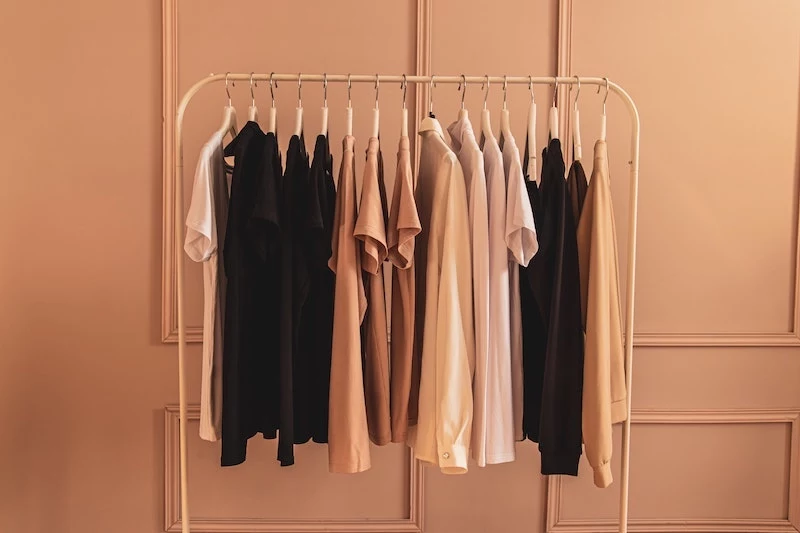
Part 1: The Foundation – Getting to Know Your Fabrics
Long before a piece of clothing is ever cut or sewn, its fate is sealed by the fabric. The fiber, the weave, and the finish all decide how it’s going to hang, how it feels on your skin, and most importantly, how it’s going to hold up. Learning to judge fabric is the single most important skill you can develop. It’s the very first thing the pros look at.
It All Starts with the Fiber
Fibers are the tiny building blocks of your clothes. They generally fall into two big families: natural and synthetic. Each one has its own personality, with unique strengths and weaknesses.
Natural fibers, which come from plants and animals, have been the go-to for centuries for a reason. They tend to breathe better and just feel more comfortable against the skin.
- Cotton: The workhorse of the fabric world. But heads up, not all cotton is created equal. You want to look for long-staple varieties like Pima or Egyptian cotton. The longer fibers create a yarn that’s way smoother and stronger. This is the difference between a t-shirt that holds its shape and one that gets saggy and scratchy. A cheap cotton garment often uses short-staple fibers, which break easily and cause those annoying little pills after a few washes. A good quality Pima cotton tee might run you $30-$50, but it’ll outlast five cheap ones.
- Linen: Made from the flax plant, linen is super strong and breathable, making it a dream for warm weather. Its signature trait is that it wrinkles. Some people hate this, but honestly, it’s part of its charm. Good linen has a slightly crisp feel and a natural, uneven texture called ‘slub.’ The best part? It gets softer and more beautiful with every single wash.
- Wool: Wool is a bit of a miracle fiber. It’s a natural insulator, and its fibers have a built-in crimp that gives them elasticity—that’s why a good wool suit seems to shake out its own wrinkles. When you’re shopping, just feel it. A high-quality wool like merino will feel soft and smooth. Lower-grade wool will be scratchy and make you want to tear it off immediately.
- Silk: The queen of fibers. It’s known for its incredible luster and drape. It just flows in a way that synthetics can only dream of imitating. Its main weakness is that it’s a bit delicate; it doesn’t love sunlight and needs a gentle hand when washing. A quick tip in the store: real silk has a subtle, pearly shimmer, not the hard, glassy shine of cheap polyester satin.
Synthetic fibers are man-made through chemical processes. They can offer some cool benefits like major stretch, water resistance, and of course, a lower price point. The trade-off is often in comfort and how they age.
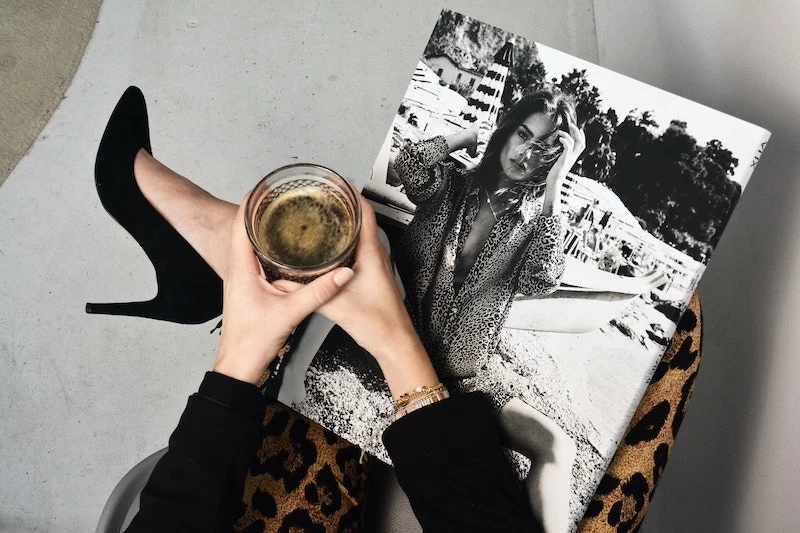
- Polyester: It’s durable, cheap, and laughs at wrinkles. But it doesn’t breathe. At all. Wearing 100% polyester on a hot day can feel like you’re wrapped in a plastic bag. It also has a knack for holding onto odors and getting staticky. In my experience, a little bit blended with a natural fiber (like 5% spandex in cotton jeans) is fine, but a fully polyester piece rarely feels good.
- Rayon (or Viscose): This one is a semi-synthetic, made from wood pulp. It was designed to feel like silk, and it drapes really nicely. The major drawback is that it gets very weak when it’s wet. It can easily stretch out of shape or even tear if you handle it too roughly while washing.
- Acrylic: Think of this as the cheap substitute for wool. It’s lightweight and can feel warm, but it has one massive flaw: it pills like crazy. An acrylic sweater might look great on the rack, but after a few wears, it will be covered in those ugly little fiber balls. It also lacks the amazing moisture-wicking magic of real wool.
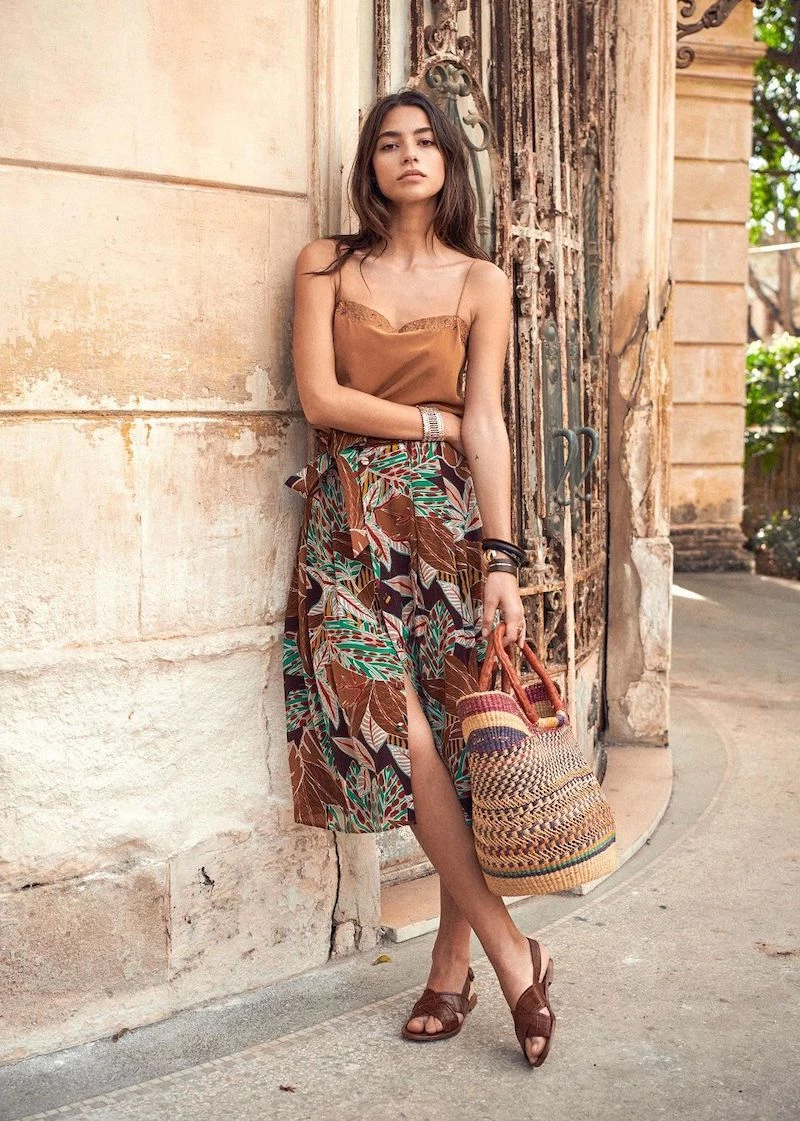
How It’s Made: Weaves, Knits, and Seams
Fibers get spun into yarn, and then that yarn is either woven or knitted into fabric. This structure is just as important as the fiber itself.
A simple in-store test? Grab a bit of the fabric and scrunch it up tightly in your fist for a few seconds. If it comes out looking like a crumpled napkin, it’s going to be a nightmare to keep wrinkle-free. If it smooths out reasonably well, you’ve got a winner.
Next, look at the seams. This tells you everything about how much care went into making the garment.
- Stitch Density: Look closely at a line of stitching. On a well-made piece, the stitches will be small, tight, and even. You’re looking for about 10-14 stitches per inch on a quality shirt. If you see big, long stitches, maybe only 6-8 per inch, that’s a red flag that it was made in a hurry and the seam could pop under stress.
- Pattern Matching: If the fabric has stripes or a plaid pattern, check how things line up at the seams. On a quality shirt, the stripes on the pocket should match the stripes on the body perfectly. This takes more fabric and skill, so it’s one of the first things to go in cheap production.
- The Inside Story: Turn the garment inside out. A cheap piece will have raw, fraying edges or a messy-looking serged stitch. A high-quality garment will have beautifully finished seams. A French seam, for example, tucks the raw edge away inside another line of stitching. It’s clean, durable, and a true sign of craftsmanship.

Part 2: The Cornerstone – A Guide to Getting the Perfect Fit
Let’s be real: the most luxurious fabric in the world will look sloppy if it doesn’t fit your body. Fit is everything. It’s the difference between feeling sharp and feeling like you’re wearing a costume.
Your Secret Weapon: A Good Tailor
A great tailor is the best partner you can have in this journey. And no, they aren’t just for fancy suits! They can make a $40 pair of pants or a thrifted blazer look like it was custom-made for you. Find one by asking for recommendations at a high-end clothing store or even your local dry cleaner. Check online reviews, too.
A good tailor will ask you questions. When you go for a fitting, always wear the shoes you plan to wear with the item. It’s crucial for getting the hem length on pants or a skirt just right.
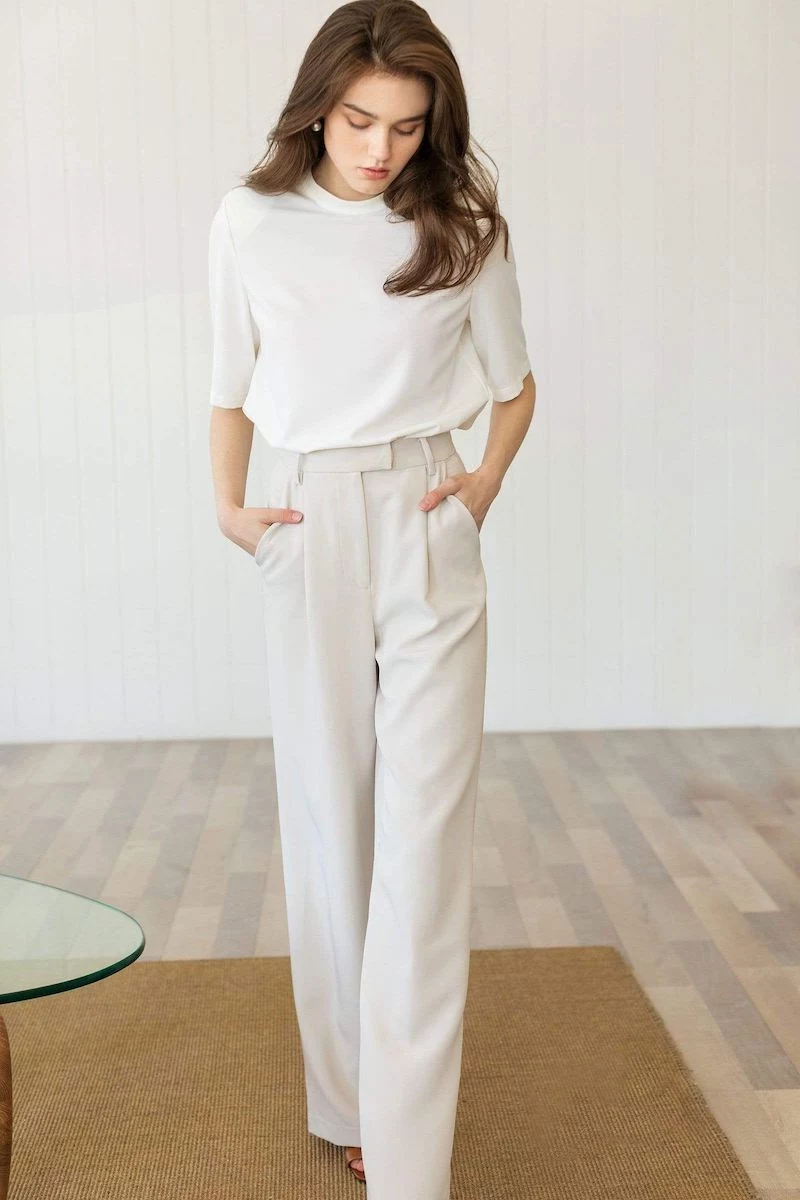
Common alterations that make a huge impact:
- Hemming Trousers or Skirts: A basic job that usually costs between $15 and $25.
- Adjusting Sleeve Length: Another simple fix to make sure cuffs hit right at your wrist bone.
- Taking in the Waist: Easily fixes that annoying gap at the back of your pants.
By the way, people get intimidated talking to a tailor. Don’t be! Instead of just saying ‘make it fit better,’ try this: “I love these trousers but they feel a bit baggy in the seat. Can we see about slimming them down for a cleaner line?” It gives them clear direction.
Key Fit Points to Check in the Dressing Room
When you’re trying things on, ignore the size on the tag. Focus on these areas. It’s always better to buy something that fits the widest part of your body (like your shoulders or hips) and have the rest taken in.
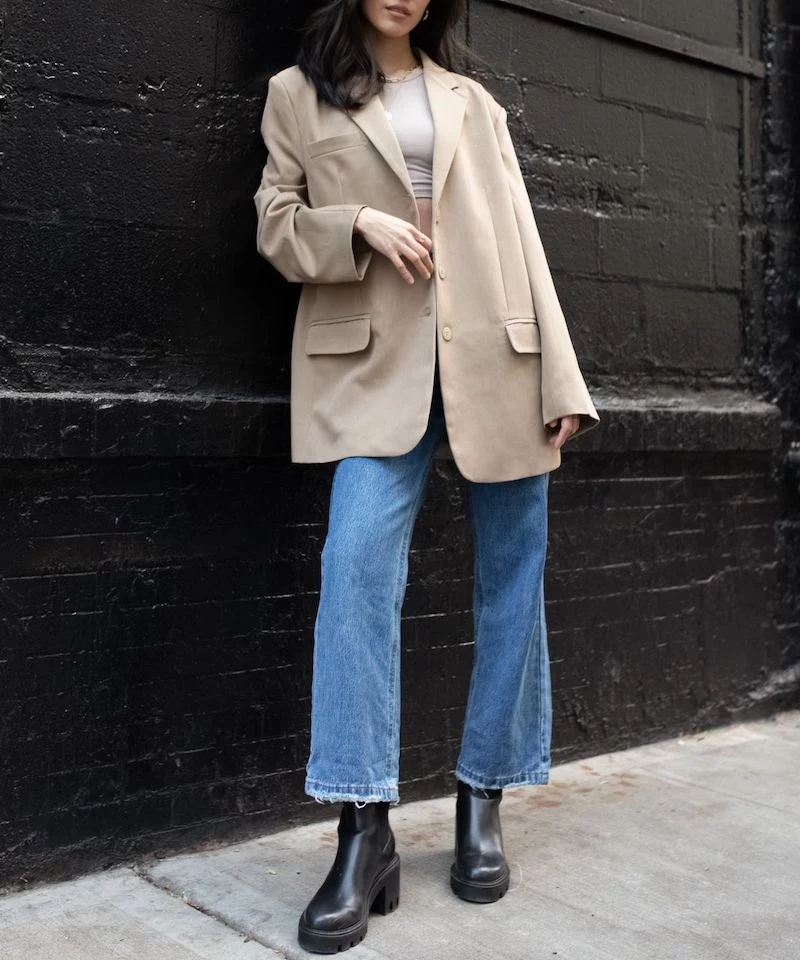
- Jackets & Blazers: The shoulder seam must sit right on the edge of your natural shoulder. This is the one alteration that’s super difficult and expensive, so nail this part first. A shoulder adjustment can run you anywhere from $75 to $150, because it’s basically deconstructing and rebuilding the jacket. Also, make sure the jacket buttons easily without pulling into a strained ‘X’ shape.
- Trousers: The fabric should drape cleanly over your seat and thighs without excessive bunching or pulling. The ‘break’ (where the cuff meets your shoe) is a personal choice, but make it a conscious one.
- Shirts & Blouses: Check the placket—the strip with the buttons. There should be no gaping at the chest. If there is, the shirt is too small in the bust, even if it fits everywhere else.
Part 3: Building Your Wardrobe – Smart Investments and Color
A well-made wardrobe isn’t about having a closet bursting with clothes. It’s about having the right clothes. This means shifting your mindset from chasing trends to investing in a core collection of versatile, high-quality pieces that all work together.
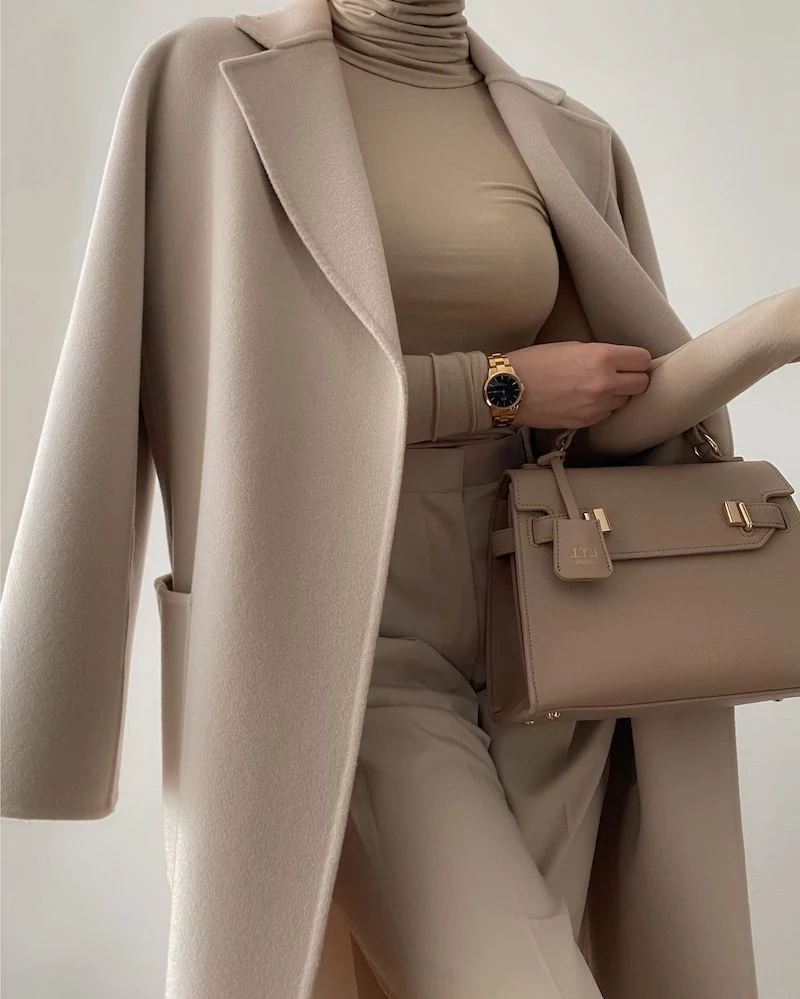
The Power of a Core Color Palette
The easiest way to create a cohesive wardrobe is to build it around 3-4 neutral colors. Think navy, charcoal grey, cream, or olive. When most of your big-ticket items—coats, trousers, blazers—are in these colors, everything becomes interchangeable. It makes getting dressed in the morning ridiculously easy.
Then you can add 1-2 accent colors for personality. A pop of rust, a deep green, or a soft rose in a shirt or scarf can bring a neutral outfit to life. Hold different colored fabrics up to your face in natural light. The right color will make your skin look bright; the wrong one can make you look tired.
Your First 5 Investments
For someone starting from scratch, thinking about ‘essentials’ can be overwhelming. So let’s make it simple. Here are the first five pieces to focus on, in order of impact:
- One Pair of Great-Fitting Trousers or Jeans: This is your foundation. Whether it’s tailored black trousers or a perfect pair of dark-wash denim, find a pair that makes you feel amazing and get it tailored to fit you perfectly.
- A Well-Structured Coat or Blazer: This is an investment. A classic wool overcoat or a well-made blazer instantly pulls any outfit together. Look for high wool content and a full lining.
- Quality Knitwear: One fantastic sweater in merino wool, cashmere, or high-quality cotton is worth more than a pile of pilling acrylic. It provides warmth without bulk and can be dressed up or down.
- A Versatile Shirt: This could be a crisp cotton button-down, a simple silk blouse, or even just a few high-quality Pima cotton t-shirts. The key is impeccable fabric and fit.
- A Pair of Quality Leather Shoes: Shoes ground your entire look. A well-made pair of leather boots, loafers, or brogues can last for years with proper care.
Oh yeah, and thrift stores are your best friend here. You can often find incredible natural-fiber garments from top-tier brands for a fraction of the cost. You just need patience and the knowledge to spot the good stuff.
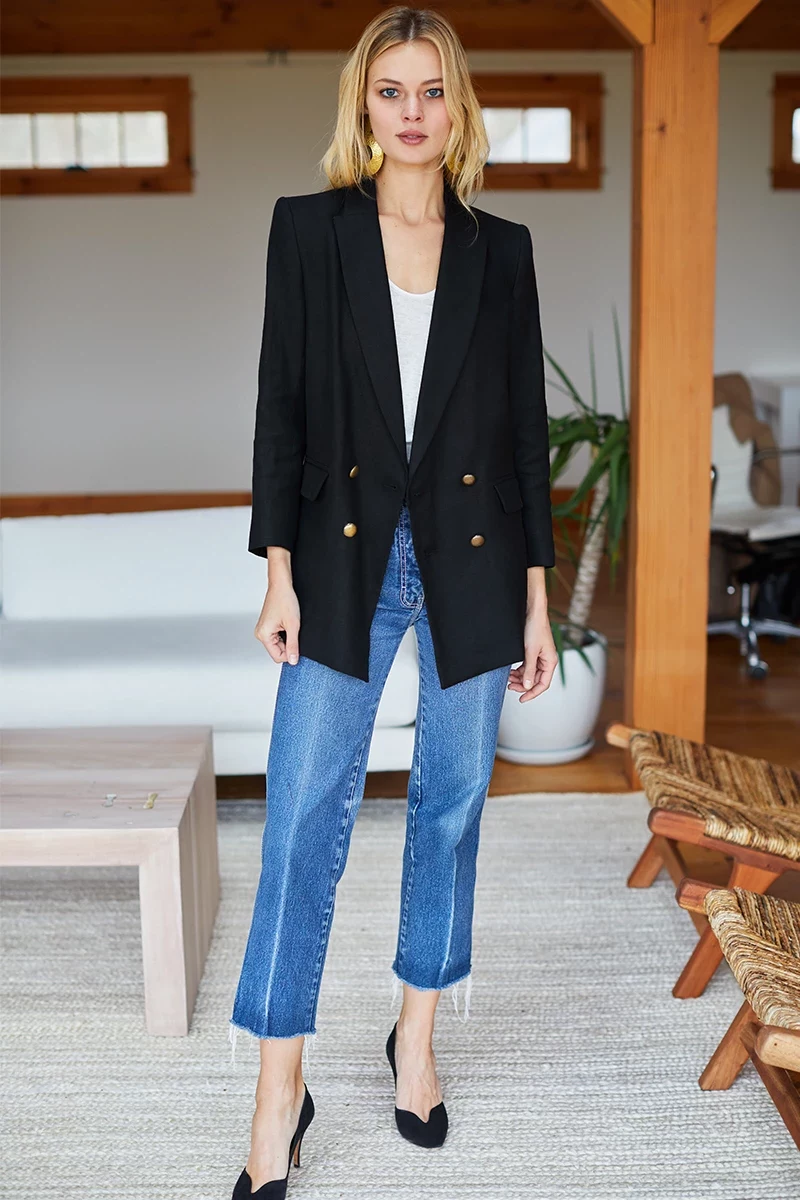
Part 4: The Finishing Touches – Proper Care and Maintenance
You can own the most beautiful clothes in the world, but they’ll look cheap if they’re wrinkled or stained. Garment care isn’t a chore; it’s how you protect your investment.
Pressing, Not Just Ironing
There’s a difference between sliding a hot iron back and forth and actually pressing a garment. Pressing involves lifting and placing the iron, using steam to relax the fibers. This avoids stretching the fabric or creating an ugly shine.
A good steam iron and a pressing cloth (just a piece of plain, undyed cotton) are game-changers. You place the cloth between the iron and your garment to protect delicates like wool and silk from direct heat.
Quick Tip: I once melted a shiny, permanent patch onto a favorite polyester-blend blouse because my iron was too hot. It was a total mess. That’s why I always test the temperature on an inside seam first! Never leave an iron face-down on your clothes, even for a second.
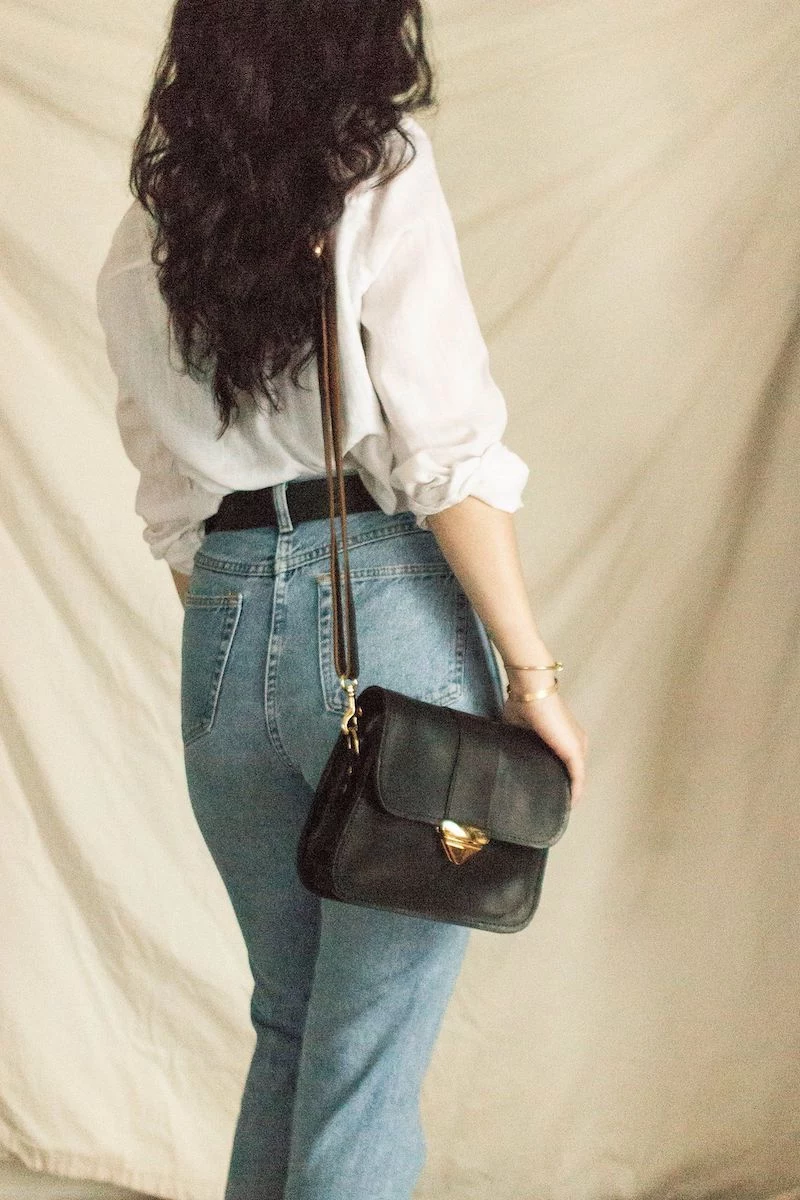
Time-Saving Hack: In a rush? Hang a wrinkled shirt or blouse in the bathroom while you take a hot shower. The steam will release many of the minor wrinkles. It’s not as good as a proper press, but it works wonders when you’re short on time.
Preservation is a Skill
How you wash and store clothes has a huge impact on their lifespan.
- Read the Label: Those symbols aren’t suggestions. ‘Dry Clean Only’ often means the garment’s internal structure (like in a blazer) can’t handle being submerged in water.
- Hand-Washing a Sweater (The Right Way): It’s easy! 1. Fill a clean sink with cool water and a capful of gentle detergent. 2. Submerge the sweater, gently squeeze the suds through it (don’t wring or twist!), and let it soak for about 20 minutes. 3. Drain the sink, rinse with cool water, and gently squeeze out the excess. Lay it flat on a thick towel, roll the towel up like a burrito to absorb more water, and then lay it flat on a dry towel or mesh rack to air dry.
- Storage Matters: Ditch the thin wire hangers! They create permanent puckers in the shoulders. Use wider wooden or felt hangers. And always, always fold your heavy sweaters. Hanging them will cause them to stretch out and get misshapen over time.
This week’s quick challenge: Find the worst hanger in your closet—probably a wire one from the dry cleaner—and replace it with a proper wooden or felt one. It’s a $2 upgrade that will instantly start saving your shirts’ shoulders. You can find them at places like Target or online.
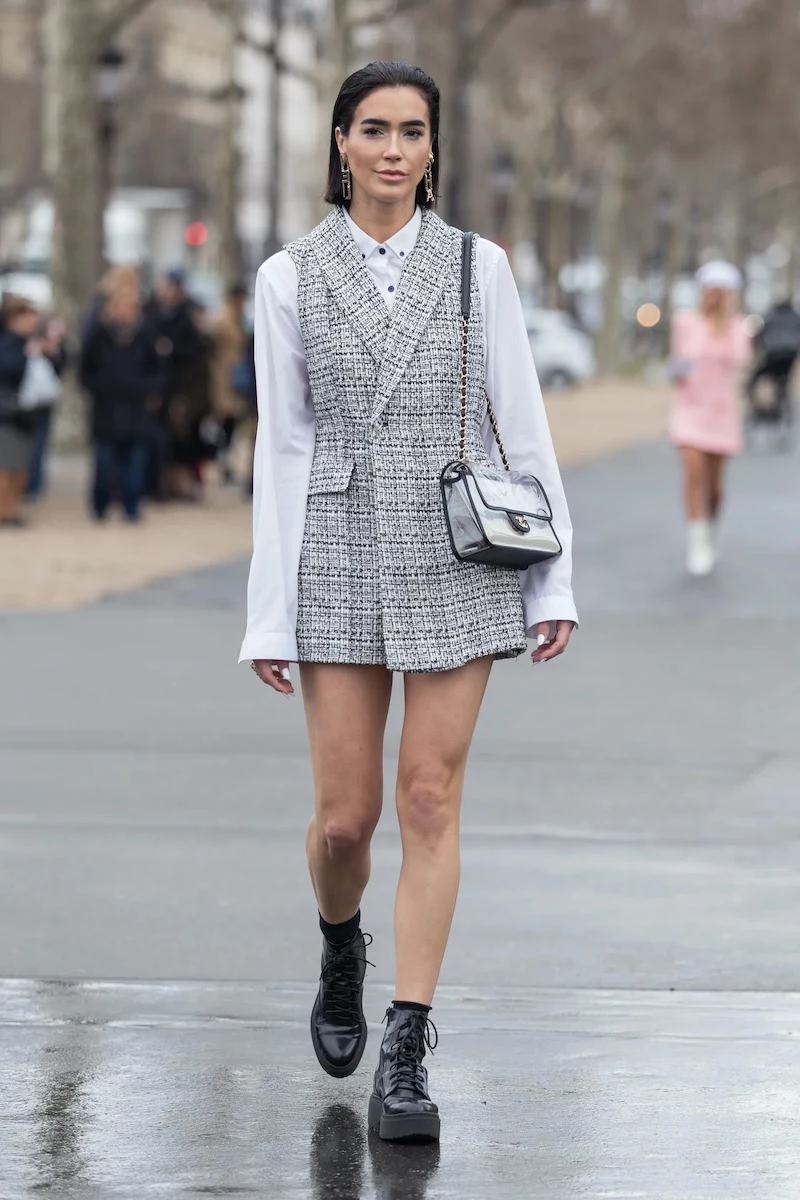
Part 5: Accessories and Pulling It All Together
With a solid foundation of basics, accessories are where you really get to play and express your personality. They’re the final punctuation on your outfit.
Focus on Quality Materials
Just like with clothes, the material is everything. One good leather belt is infinitely better than five cracking plastic ones.
- Leather: A genuine leather bag or pair of shoes will develop a beautiful, rich patina over time. ‘PU leather’ or ‘vegan leather’ is just plastic—it will inevitably peel, crack, and end up in a landfill. Learn to recognize the smell and feel of the real deal.
- Shoes as the True Foundation: Well-made shoes are an engineering marvel. Look for leather uppers and, if you can, a stitched sole rather than a glued one. A Goodyear welted shoe, for example, can be re-soled by a cobbler multiple times, extending its life for decades. To spot one, flip the shoe over. You’ll often see a line of visible stitching running along the edge of the sole where it meets the upper. A glued sole will just look smooth and seamless.
Quick guide to polishing shoes: It takes 5 minutes and makes you look 100% more put-together. 1. Wipe the shoes clean with a damp cloth. 2. Use a small brush or cloth to apply a thin, even layer of cream or wax polish (a tin costs about $5-$10 and lasts forever). 3. Let it dry for a few minutes, then buff it to a shine with a separate, clean brush or soft cloth.
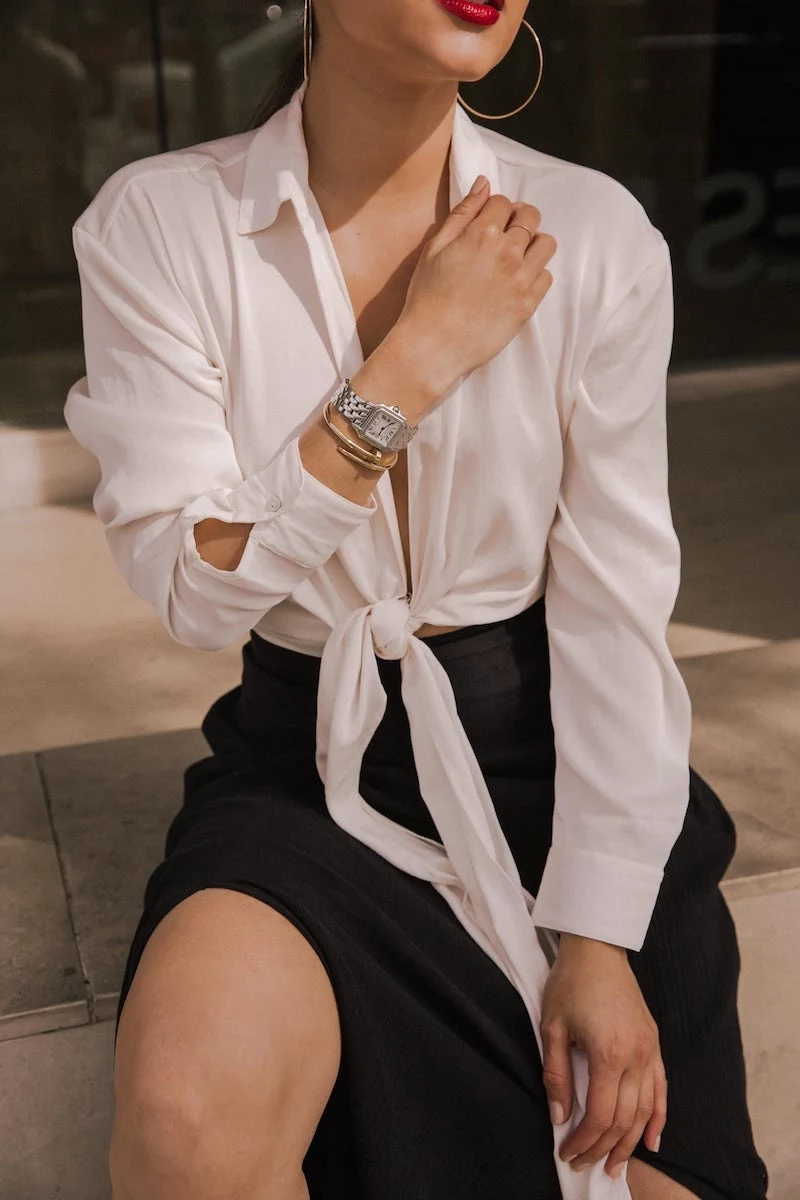
Know When to Call a Pro
Knowing your limits is a sign of wisdom. Sure, you can learn to sew on a button, but complex jobs—like altering the shoulders of a jacket or working with leather—should be left to a professional tailor. The same goes for tough stains on a beloved garment; a good dry cleaner has tools and solvents that are way more effective and safer than anything you have at home.
Building a wardrobe with integrity is a journey, not a destination. It’s about choosing quality over quantity and longevity over a fleeting trend. When you learn to see clothes through the eyes of a craftsperson, you gain so much more than a better closet. You gain an appreciation for skill, a respect for materials, and a quiet confidence that starts from within.
Inspirational Gallery
The Hand-Feel Test: Before you even look at a label, close your eyes and touch the fabric. Quality material has a distinct character. A good wool should feel substantial, not scratchy. A quality silk is smooth and fluid, never plasticky. Linen should have a crisp, cool texture with natural slubs. Trust your sense of touch—it’s often the most honest assessor of a garment’s true nature.
More than 60% of fabric fibers are now synthetics, derived from fossil fuels. Choosing durable, natural fibers isn’t just a style choice; it’s a vote for a more sustainable closet.
This shift towards synthetics is a key driver of fast fashion’s disposability. Garments made from high-quality natural fibers like linen, Tencel™, or long-staple cotton are designed to last years, not just a season. They break down naturally at the end of their long life, reducing microplastic pollution and landfill waste.
- Check that patterns match up at the seams, especially on plaids or stripes.
- Gently tug on a seam to see if there’s any pulling or gaps between stitches.
- Look inside for finished seams (like French or flat-felled seams) instead of raw, serged edges.
- Ensure all buttons are sewn on tightly and that there are spare buttons included.
Can a simple zipper really be a sign of quality?
Absolutely. Turn a garment over and check the zipper brand. If you see the letters “YKK,” you’re in good hands. YKK is a Japanese manufacturer known for making the world’s most reliable zippers; they’re smooth, durable, and rarely snag. Luxury brands might even use Riri zippers from Switzerland, famous for their polished look and flawless operation. A flimsy, unbranded zipper, however, is often one of the first things to break and a clear sign that corners were cut.
Don’t underestimate the power of hardware. The buttons on a garment are a small but telling detail. Mass-produced plastic buttons feel light, chip easily, and often have a cheap-looking sheen. Look for the subtle depth and cool touch of superior materials. Buttons made from mother-of-pearl, corozo (a durable nut), horn, or metal not only last longer but also elevate the entire feel of the piece, signaling that the maker cared about every last detail.
- It breathes better than almost any other fabric, keeping you cool.
- It gets softer and more comfortable with every single wash.
- It’s incredibly strong and can last for decades if cared for properly.
The secret? It’s linen. A high-quality linen garment is an investment in timeless comfort and is the perfect example of a piece that truly gets better with age, developing a unique patina over time.
French Seam: All raw edges are tucked away inside a second seam, creating a very clean, polished look on both the inside and outside. You’ll find it on high-end silk blouses and delicate fabrics because it’s strong and prevents fraying.
Overlocked Seam: A serger machine loops thread around the edge of the fabric. It’s fast and functional but leaves a more visible, less refined finish on the inside. It’s the standard for t-shirts and most mass-market clothing.
While an overlocked seam isn’t inherently bad, a French seam is an undeniable sign of higher craftsmanship and attention to detail.
One of the best-kept secrets to a high-quality wardrobe isn’t buying new, but improving what you find. A great tailor can be your biggest ally. They can take a well-made but slightly ill-fitting thrift store blazer and make it look bespoke, adjust the hem of a perfect pair of trousers, or replace cheap buttons with beautiful new ones. Learning what can be altered (waists, hems, sleeves) and what can’t (shoulders, collar) is a skill that unlocks a world of high-quality possibilities on any budget.
The world of wool is vast and varied, going far beyond the itchy sweaters of our childhoods. Understanding the different types helps you choose the right garment for the right purpose.
- Merino Wool: Incredibly fine and soft, it’s famous for its temperature-regulating properties, making it ideal for base layers and fine-gauge sweaters. Look for brands like Smartwool or Icebreaker for performance wear.
- Cashmere: The pinnacle of luxury, known for its unparalleled softness and lightweight warmth. It comes from the undercoat of cashmere goats and requires delicate care.
- Lambswool: The first shearing from a young sheep, it’s smooth, soft, and elastic, perfect for classic, durable knitwear.










